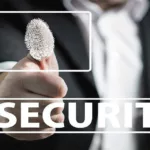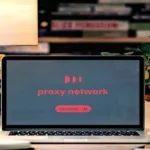No one was prepared for the educational impact of the COVID-19 pandemic.
Lockdowns and infections have made it impossible to teach students in a traditional classroom environment. More than ever, the nation’s students are in need of engaged remote learning that is tailored to their unique needs and circumstances.
In the midst of the growing uncertainty about the 2020-2021 school year, we sat down with entrepreneur Scott Lee to discuss his strategies for personalizing remote learning.
Scott Lee is the founder and CEO of Gooroo, an online tutoring company that connects highly qualified tutors with students on a case-by-case basis.
“I have been really encouraged by the way our team has risen to the occasion,” remarked Lee, reflecting on recent transitions to remote learning. “We are carrying out what we set out to do—match our students’ uniqueness with our own enthusiasm for learning.”
Gooroo’s Virtual Classroom
In recent years, there has been a mounting debate over the efficacy of online learning. However, with little choice in the lockdown environment, most students have had to transition to remote learning.
Gooroo’s online platform was designed to meet and bridge the divide between the structure of the classroom and the convenience of remote learning. Their Virtual Classroom includes tools like drag and drop vocabulary and translations or collaborative coding that make it easy to show, not just tell.
“We designed Gooroo with the intent of assessing each student’s unique learning strategies and providing them a one-on-one experience that is just as effective as an in-person meeting,” said Lee.
Rather than randomly matching students with available tutors, the Gooroo algorithm matches students’ unique learning styles, needs, and goals with a tutor’s unique skill set.
Once the student is matched with a tutor, the two can meet face-to-face in Gooroo’s virtual classroom.
This unique virtual classroom is equipped with everything. The tutor and student are able to collaborate using audio, video, screen sharing, and even electronic annotation software. The classroom also saves sessions, so students can review recently learned concepts and material.
Feedback and Follow-ups from Top Tutors Who Care
Fortunately for today’s students, existing technology has allowed learning to continue online. But the quality of this technology is not always there. More than half of parents are concerned about the success of their K-12 students during the COVID-19 pandemic.
“I think tutoring plays a big role here,” explained Lee.
“The rapport that a caring tutor builds with a student can really extend classroom learning. Even when kids are on campus, there aren’t usually enough resources for the student to get much one-on-one instruction from their teachers. A tutor can set goals and follow-up regularly using that tutor-student rapport.”
And Gooroo tutors are not just any tutors. Their rigorous hiring process includes comprehensively assessing a tutor’s educational history, interviewing them face-to-face, and undergoing a thorough training process. Before working with Gooroo, many of these tutors attended top American universities such as Columbia, Harvard, Stanford, and NYU.
“But overall,” stressed Lee, “we make it a point to hire tutors who care. We want each one of our tutors to match our own enthusiasm for this profession.”
Gooroo is Serving Communities Online
Working within community bubbles is another strategy Gooroo has employed to personalize remote learning.
Since the start of the pandemic, Gooroo has been offering live online courses to students for free. Any student of the world can sign up. These Gooroo Live webinars offer engaging instruction on a wide range of subjects, including the history of writing, high school debate, food science, test prep, and creative writing.
“Not only will this keep our current students’ minds active,” adds Lee, “This way we can reach students who can’t afford supplementary learning during the pandemic.”
Post-Pandemic, Remote Learning Could Be Here to Stay …
According to Mayssoun Bydon, founder of the Institute for Higher Learning (IHL Prep), the fact that educators are figuring out how to integrate remote learning into brick-and-mortar education suggests this new infrastructure will be reused after the pandemic.
Joshua Kim, Director of Online Programs at Dartmouth Center for Advanced Learning (DCAL), extends this foreshadowing into three post-pandemic predictions.
Firstly, as the knowledge of platforms like Blackboard and Zoom increases, hybrid learning will also dramatically increase.
Secondly, remote learning planning will become central to every educational institution.
And thirdly, existing remote learning programs will be revised and upgraded.
Lee sees this expansion into remote learning as a net positive for education in general.
“There are so many times students need to continue their learning from home,” explains Lee. “Think about students with disabilities or illnesses who can’t always make it to campus, students who can’t stay for after school programs, or students who simply want some homework help in the evenings.” Remote learning has not always been the first solution to classroom learning problems. But, now that we have the infrastructure for hybrid teaching, it is likely we will see the convenience of remote learning shaped and bettered by the sharp increase in demand.








